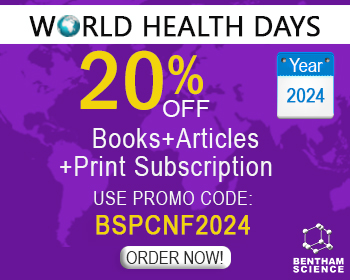Abstract
Since COVID-19 has emerged as a word public health problem, attention has been focused on how immune-suppressive drugs used for the treatment of autoimmune disorders influence the risk for SARS-CoV-2 infection and the development of acute respiratory distress syndrome (ARDS). Here, we discuss the disease-modifying agents approved for the treatment of multiple sclerosis (MS) within this context. Interferon (IFN)-β1a and -1b, which display antiviral activity, could be protective in the early stage of COVID-19 infection, although SARS-CoV-2 may have developed resistance to IFNs. However, in the hyperinflammation stage, IFNs may become detrimental by facilitating macrophage invasion in the lung and other organs. Glatiramer acetate and its analogues should not interfere with the development of COVID-19 and may be considered safe. Teriflunomide, a first-line oral drug used in the treatment of relapsing-remitting MS (RRMS), may display antiviral activity by depleting cellular nucleotides necessary for viral replication. The other first-line drug, dimethyl fumarate, may afford protection against SARS-CoV-2 by activating the Nrf-2 pathway and reinforcing the cellular defenses against oxidative stress. Concern has been raised regarding the use of second-line treatments for MS during the COVID-19 pandemic. However, this concern is not always justified. For example, fingolimod might be highly beneficial during the hyperinflammatory stage of COVID-19 for a number of mechanisms, including the reinforcement of the endothelial barrier. Caution is suggested for the use of natalizumab, cladribine, alemtuzumab, and ocrelizumab, although MS disease recurrence after discontinuation of these drugs may overcome a potential risk for COVID-19 infection.
Keywords: Disease-modifying therapy, multiple sclerosis, COVID-19 pandemic, Sars-Cov-2, immunomodulation, neuroprotection, cytokine storm, risk-benefit ratio
[http://dx.doi.org/10.1038/s41586-020-2012-7] [PMID: 32015507]
[PMID: 33024307]
[http://dx.doi.org/10.1016/j.cell.2020.02.052] [PMID: 32142651]
[http://dx.doi.org/10.15252/msb.20209610] [PMID: 32715618]
[http://dx.doi.org/10.1126/science.abd2985] [PMID: 33082293]
[http://dx.doi.org/10.1126/science.abd3072] [PMID: 33082294]
[http://dx.doi.org/10.1016/j.healun.2020.03.012] [PMID: 32362390]
[http://dx.doi.org/10.1016/j.chom.2020.04.009] [PMID: 32320677]
[http://dx.doi.org/10.1001/jama.2020.12839] [PMID: 32648899]
[http://dx.doi.org/10.1038/s41586-020-2521-4] [PMID: 32640463]
[http://dx.doi.org/10.1001/jamaneurol.2019.3365] [PMID: 31589278]
[http://dx.doi.org/10.1212/NXI.0000000000000783] [PMID: 32457226]
[http://dx.doi.org/10.1212/NXI.0000000000000787] [PMID: 32503092]
[http://dx.doi.org/10.1001/jamaneurol.2020.2581] [PMID: 32589189]
[http://dx.doi.org/10.1212/NXI.0000000000000954] [PMID: 33504634]
[http://dx.doi.org/10.1002/acn3.51314]
[http://dx.doi.org/10.1016/j.msard.2021.102754] [PMID: 33609958]
[http://dx.doi.org/10.1016/S1474-4422(20)30147-2] [PMID: 32359409]
[http://dx.doi.org/10.1212/NXI.0000000000000835] [PMID: 32646885]
[http://dx.doi.org/10.1002/ana.26028] [PMID: 33480077]
[http://dx.doi.org/10.1016/j.msard.2021.102856] [PMID: 33662858]
[http://dx.doi.org/10.1212/NXI.0000000000000923] [PMID: 33310765]
[http://dx.doi.org/10.1038/s41593-020-00758-5] [PMID: 33257876]
[http://dx.doi.org/10.1212/NXI.0000000000000957] [PMID: 33504636]
[http://dx.doi.org/10.1002/acn3.51210] [PMID: 33016619]
[http://dx.doi.org/10.1146/annurev-immunol-032713-120231] [PMID: 24555472]
[http://dx.doi.org/10.3389/fimmu.2020.01459] [PMID: 32655578]
[http://dx.doi.org/10.3389/fimmu.2020.595739] [PMID: 33117408]
[http://dx.doi.org/10.1093/infdis/jiaa350] [PMID: 32559285]
[http://dx.doi.org/10.1128/JVI.01410-20] [PMID: 32938761]
[http://dx.doi.org/10.1038/s41467-020-17665-9] [PMID: 32733001]
[http://dx.doi.org/10.1016/j.autrev.2020.102567] [PMID: 32376392]
[http://dx.doi.org/10.1016/j.chom.2016.01.007] [PMID: 26867177]
[http://dx.doi.org/10.1038/s41577-020-0346-x] [PMID: 32457522]
[http://dx.doi.org/10.1126/science.abc6027] [PMID: 32661059]
[http://dx.doi.org/10.1038/s41421-020-00225-2] [PMID: 33101705]
[http://dx.doi.org/10.1126/science.abd4585] [PMID: 32972996]
[http://dx.doi.org/10.1126/science.abd4570] [PMID: 32972995]
[http://dx.doi.org/10.1038/d41586-020-03070-1] [PMID: 33139913]
[http://dx.doi.org/10.1016/j.cell.2020.04.026] [PMID: 32416070]
[http://dx.doi.org/10.1126/science.abc3545] [PMID: 32527925]
[http://dx.doi.org/10.1038/s41591-020-0901-9] [PMID: 32398875]
[http://dx.doi.org/10.1016/j.chom.2020.04.017] [PMID: 32407669]
[http://dx.doi.org/10.1038/s41587-020-0602-4] [PMID: 32591762]
[http://dx.doi.org/10.1016/j.cell.2020.04.035] [PMID: 32413319]
[http://dx.doi.org/10.1038/s41588-020-00731-9] [PMID: 33077916]
[http://dx.doi.org/10.1212/NXI.0000000000000811] [PMID: 32527763]
[http://dx.doi.org/10.1016/j.celrep.2020.108234] [PMID: 32979938]
[PMID: 30905097]
[http://dx.doi.org/10.4049/jimmunol.1701450] [PMID: 30068593]
[http://dx.doi.org/10.1177/1352458508089411] [PMID: 18611988]
[http://dx.doi.org/10.1007/s00702-009-0272-3] [PMID: 19669693]
[http://dx.doi.org/10.1016/j.jneuroim.2005.07.001] [PMID: 16083971]
[http://dx.doi.org/10.2174/092986711795496881] [PMID: 21466473]
[http://dx.doi.org/10.1007/s40263-020-00756-y] [PMID: 32780300]
[http://dx.doi.org/10.1177/1352458519851981] [PMID: 31172849]
[http://dx.doi.org/10.1007/s11910-017-0800-8] [PMID: 28940162]
[http://dx.doi.org/10.1007/s40265-014-0212-x] [PMID: 24740824]
[http://dx.doi.org/10.1016/j.jneuroim.2013.10.003] [PMID: 24182769]
[http://dx.doi.org/10.1186/s12974-016-0715-3] [PMID: 27658519]
[http://dx.doi.org/10.1177/1756285617722500] [PMID: 29204190]
[http://dx.doi.org/10.4049/jimmunol.169.6.3392] [PMID: 12218161]
[http://dx.doi.org/10.1189/jlb.0504308] [PMID: 15328336]
[http://dx.doi.org/10.1371/journal.pone.0013128] [PMID: 20957046]
[http://dx.doi.org/10.1016/j.bcp.2015.08.111] [PMID: 26341389]
[http://dx.doi.org/10.1212/WNL.0b013e31829e6fbf] [PMID: 23851964]
[http://dx.doi.org/10.1097/01.tp.0000181149.76113.50] [PMID: 16534472]
[http://dx.doi.org/10.1097/00007890-200101150-00031] [PMID: 11211189]
[http://dx.doi.org/10.1016/j.molmed.2019.11.003] [PMID: 31862243]
[http://dx.doi.org/10.18632/oncotarget.17863] [PMID: 28574826]
[http://dx.doi.org/10.1007/s13365-017-0570-8] [PMID: 28913765]
[http://dx.doi.org/10.1007/s13238-020-00768-w] [PMID: 32754890]
[http://dx.doi.org/10.1007/s00415-020-09921-1] [PMID: 32494855]
[http://dx.doi.org/10.1007/s00415-020-09944-8] [PMID: 32494856]
[http://dx.doi.org/10.1007/s00415-020-10196-9] [PMID: 32865629]
[http://dx.doi.org/10.1016/j.jneuroim.2020.577323] [PMID: 32688146]
[http://dx.doi.org/10.1007/s40263-014-0155-5] [PMID: 24623127]
[http://dx.doi.org/10.1016/j.autrev.2018.07.001] [PMID: 30316988]
[http://dx.doi.org/10.1002/jcp.27930] [PMID: 30536402]
[http://dx.doi.org/10.1126/science.aan4665] [PMID: 29599194]
[http://dx.doi.org/10.1016/j.bmc.2006.09.053] [PMID: 17049250]
[http://dx.doi.org/10.3389/fimmu.2017.01922] [PMID: 29312359]
[http://dx.doi.org/10.1038/s41467-020-18764-3] [PMID: 33009401]
[http://dx.doi.org/10.1172/JCI72151] [PMID: 24691444]
[http://dx.doi.org/10.1038/srep41605] [PMID: 28150703]
[http://dx.doi.org/10.1042/AN20100033] [PMID: 21382015]
[http://dx.doi.org/10.1007/s00401-015-1422-3] [PMID: 25920452]
[http://dx.doi.org/10.1159/000302687] [PMID: 20453514]
[http://dx.doi.org/10.1002/eji.201142108] [PMID: 22144343]
[http://dx.doi.org/10.1212/WNL.0000000000001454] [PMID: 25762712]
[http://dx.doi.org/10.1007/s13365-011-0027-4] [PMID: 21487835]
[http://dx.doi.org/10.1093/cid/cit376] [PMID: 23728144]
[PMID: 32940121]
[http://dx.doi.org/10.1126/science.abc1669] [PMID: 32358202]
[http://dx.doi.org/10.1177/2055217320942931] [PMID: 32850133]
[http://dx.doi.org/10.1177/1352458520942198] [PMID: 32662742]
[http://dx.doi.org/10.1016/j.msard.2020.102250] [PMID: 32531754]
[http://dx.doi.org/10.1016/j.msard.2020.102165] [PMID: 32388451]
[http://dx.doi.org/10.1038/nature13430] [PMID: 25043026]
[http://dx.doi.org/10.1038/nri2974] [PMID: 21546914]
[http://dx.doi.org/10.2165/11596550-000000000-00000] [PMID: 22149256]
[http://dx.doi.org/10.1002/cpdd.459] [PMID: 29694732]
[http://dx.doi.org/10.1007/s40120-019-00160-9] [PMID: 31677060]
[http://dx.doi.org/10.1093/cvr/cvw256] [PMID: 28082452]
[http://dx.doi.org/10.1371/journal.pone.0182329] [PMID: 28771545]
[http://dx.doi.org/10.1002/path.1570] [PMID: 15141377]
[http://dx.doi.org/10.15252/embj.2020105114] [PMID: 32246845]
[http://dx.doi.org/10.15585/mmwr.mm6913e1] [PMID: 32240128]
[http://dx.doi.org/10.1038/ni.1743] [PMID: 19483717]
[http://dx.doi.org/10.1038/srep37297] [PMID: 27849062]
[http://dx.doi.org/10.1073/pnas.1107024108] [PMID: 21715659]
[http://dx.doi.org/10.1172/JCI12450] [PMID: 11544274]
[http://dx.doi.org/10.1165/rcmb.2012-0411TR] [PMID: 23449739]
[http://dx.doi.org/10.4049/jimmunol.175.11.7151] [PMID: 16301618]
[http://dx.doi.org/10.1111/j.1600-6143.2004.00476.x] [PMID: 15196057]
[http://dx.doi.org/10.1183/09031936.00047810] [PMID: 21071472]
[http://dx.doi.org/10.1038/nrn2911] [PMID: 20842175]
[http://dx.doi.org/10.1038/srep41734] [PMID: 28134307]
[http://dx.doi.org/10.1073/pnas.1206093109] [PMID: 22891354]
[http://dx.doi.org/10.1016/j.phrs.2012.10.004] [PMID: 23073075]
[http://dx.doi.org/10.1002/prp2.135] [PMID: 26171219]
[http://dx.doi.org/10.1016/j.jns.2020.116832] [PMID: 32299017]
[http://dx.doi.org/10.1212/WNL.0000000000001302] [PMID: 25636714]
[http://dx.doi.org/10.2147/DDDT.S122249] [PMID: 29138536]
[http://dx.doi.org/10.1080/13543784.2019.1676725] [PMID: 31603362]
[http://dx.doi.org/10.1111/j.1365-2567.2009.03115.x] [PMID: 19740383]
[http://dx.doi.org/10.1080/14712598.2018.1425388] [PMID: 29309202]
[http://dx.doi.org/10.1212/NXI.0000000000000228] [PMID: 27213173]
[http://dx.doi.org/10.4049/jimmunol.1301926] [PMID: 24198283]
[http://dx.doi.org/10.1001/jamaneurol.2017.0676] [PMID: 28604916]
[http://dx.doi.org/10.3389/fimmu.2020.00056] [PMID: 32082320]
[http://dx.doi.org/10.1177/1352458520926459] [PMID: 32463329]
[http://dx.doi.org/10.1016/j.msard.2020.102314] [PMID: 32593959]
[http://dx.doi.org/10.1016/j.msard.2020.102402] [PMID: 32711297]
[http://dx.doi.org/10.1016/j.msard.2020.102447] [PMID: 32835901]
[http://dx.doi.org/10.1212/WNL.0000000000004354] [PMID: 28835403]
[http://dx.doi.org/10.1212/CPJ.0000000000000567] [PMID: 30859008]
[http://dx.doi.org/10.1212/WNL.0000000000010380] [PMID: 32727835]
[http://dx.doi.org/10.1016/j.msard.2020.102120] [PMID: 32315980]
[http://dx.doi.org/10.1177/1352458520943791] [PMID: 32762494]
[http://dx.doi.org/10.1016/j.msard.2020.102201] [PMID: 32480327]
[http://dx.doi.org/10.1016/j.msard.2020.102185] [PMID: 32408147]
[http://dx.doi.org/10.1084/jem.20111675] [PMID: 22547654]
[http://dx.doi.org/10.1016/j.msard.2020.102195] [PMID: 32460086]
[http://dx.doi.org/10.1136/jnnp-2017-317493] [PMID: 29602795]
[http://dx.doi.org/10.1038/s41577-020-0402-6] [PMID: 32728222]
[http://dx.doi.org/10.1016/j.cell.2020.05.015] [PMID: 32473127]
[http://dx.doi.org/10.1016/j.cell.2020.08.017] [PMID: 32979941]
[http://dx.doi.org/10.1002/jmv.25946] [PMID: 32343415]
[http://dx.doi.org/10.3389/fimmu.2020.00827] [PMID: 32425950]
[http://dx.doi.org/10.1016/j.cell.2020.08.025] [PMID: 32877699]
[http://dx.doi.org/10.1038/s41590-020-00814-z] [PMID: 33028979]
[http://dx.doi.org/10.1126/science.abd4250] [PMID: 32994364]
[http://dx.doi.org/10.1016/j.msard.2020.102341] [PMID: 32622338]
[http://dx.doi.org/10.1038/s41467-020-19057-5] [PMID: 33127906]
[http://dx.doi.org/10.1016/j.jaci.2020.04.013] [PMID: 32333914]
[http://dx.doi.org/10.3389/fimmu.2017.01454] [PMID: 29167667]
[http://dx.doi.org/10.3389/fimmu.2020.01580] [PMID: 32670297]
[http://dx.doi.org/10.3389/fimmu.2019.02753] [PMID: 31921101]
[http://dx.doi.org/10.1016/j.autrev.2016.07.011] [PMID: 27392505]
[http://dx.doi.org/10.1016/j.anai.2019.07.014] [PMID: 31349011]
[http://dx.doi.org/10.3389/fimmu.2019.02881] [PMID: 31921145]
[http://dx.doi.org/10.1186/s12948-019-0113-3] [PMID: 31080365]
[http://dx.doi.org/10.1111/cei.13495] [PMID: 32671831]
[http://dx.doi.org/10.1016/j.ejca.2020.06.017] [PMID: 32619884]
[http://dx.doi.org/10.1007/s00415-018-8830-y] [PMID: 29550884]
[http://dx.doi.org/10.1016/j.msard.2019.01.038] [PMID: 30885375]
[http://dx.doi.org/10.1056/NEJMoa0902533] [PMID: 20089960]
[http://dx.doi.org/10.1016/j.msard.2020.102174] [PMID: 32464584]
[http://dx.doi.org/10.1016/j.msard.2018.11.021] [PMID: 30885374]
[http://dx.doi.org/10.1016/j.msard.2020.102469] [PMID: 32919180]
[http://dx.doi.org/10.1016/j.msard.2020.102452] [PMID: 32823148]
[http://dx.doi.org/10.1177/1352458520943783] [PMID: 32762488]
[http://dx.doi.org/10.1016/j.msard.2019.02.018] [PMID: 30785074]
[http://dx.doi.org/10.1016/j.jneuroim.2011.09.010] [PMID: 22035961]
[http://dx.doi.org/10.1016/j.jns.2013.06.003] [PMID: 23835090]
[http://dx.doi.org/10.1016/j.msard.2020.102476] [PMID: 32882501]
[http://dx.doi.org/10.1001/jama.2020.22760] [PMID: 33180097]
[http://dx.doi.org/10.1038/s41598-017-04968-z] [PMID: 28687730]



























